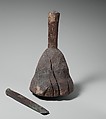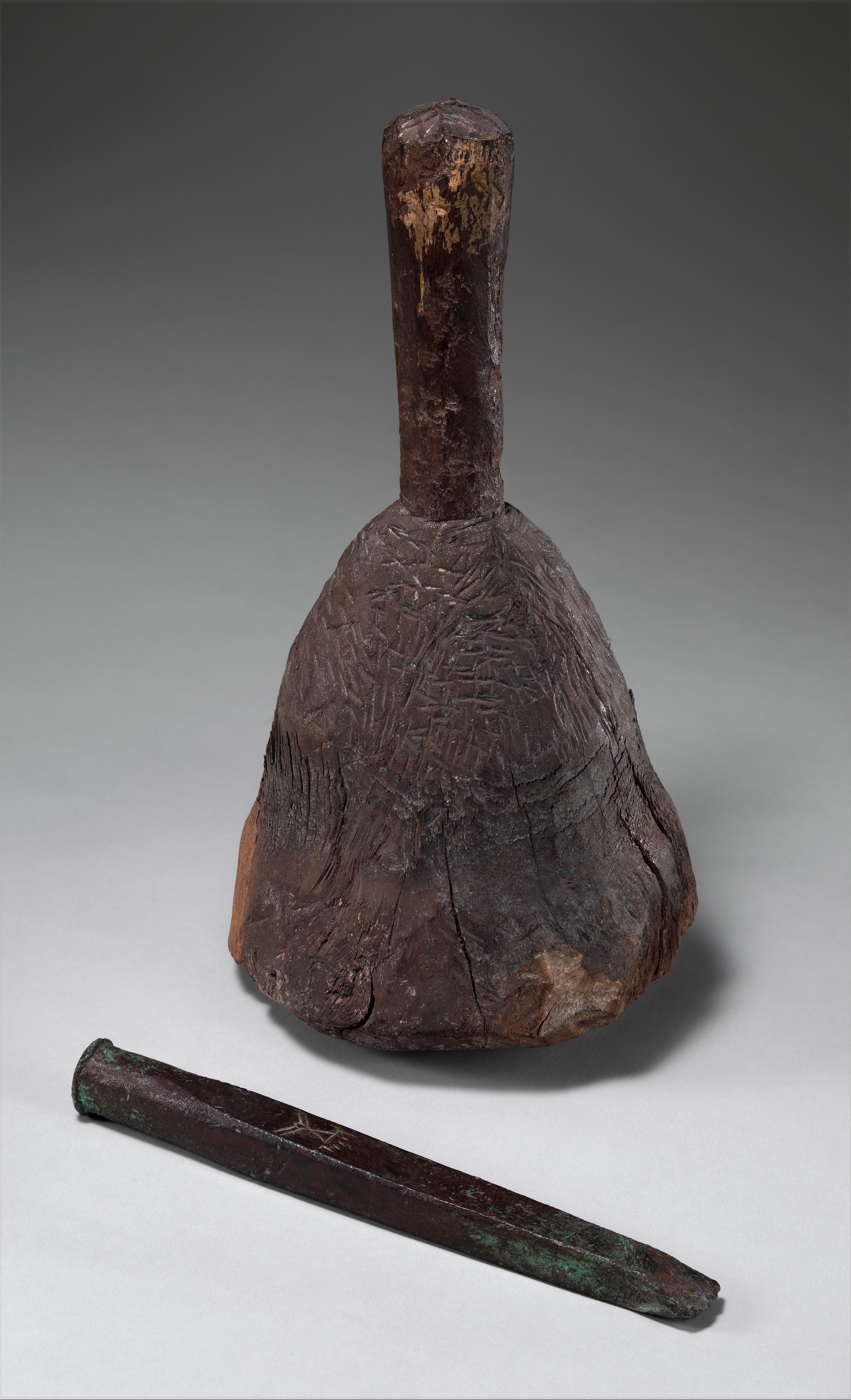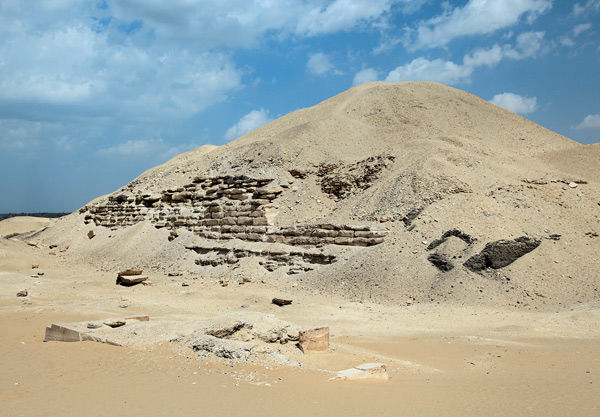Stone Mason's Chisel
Middle Kingdom
This chisel was clearly made for use and looks as if it has indeed been used. It was found in a tomb that contained at least six burials but no object of demonstrably post-Mentuhotep II date. There was even a piece of linen marked for Mentuhotep II's wife Queen Neferu. The mark incised into the chisel was previously understood to represent the pyramid which Museum excavator Herbert E. Winlock and others thought had originally existed above the solid core structure of the temple of Mentuhotep II at Deir el-Bahri. The existence of this pyramid has been put into doubt, however, although renewed discussions are under way. The mark also occurs on linen sheets from the tomb of the "Slain Soldiers" (MMA 507 see here 27.3.84-134), which has been shown to be of the time of Senwosret I, and on another piece of linen found at Lisht South close to the pyramid of that king. The sign can, therefore, no longer be exclusively associated with the temple of Mentuhotep II at Deir el-Bahri, even if this particular chisel was made and used during that king's reign. The mark's form and purpose remain enigmatic.
Due to rights restrictions, this image cannot be enlarged, viewed at full screen, or downloaded.
This artwork is meant to be viewed from right to left. Scroll left to view more.





